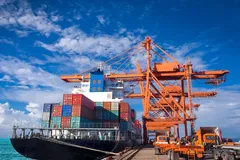
The government's targets are clear: GDP per capita should climb to $7,500 by 2030 and reach between $13,000 and $15,000 by 2045. To realise these ambitions, Vietnam must achieve an average annual growth rate in gross national income (GNI) per capita of 8.8%, which translates into a GDP growth rate of 9.5%.
Balancing Rapid Acceleration with Sustainable Momentum
Meeting such demanding growth benchmarks requires the economy to expand by at least 8% in 2025 and maintain double-digit growth in the years that follow. According to Professor Phạm Hồng Chương, President of the National Economics University (NEU), pursuing double-digit GDP growth is not merely a strategic aspiration—it is a measure of Vietnam’s long-term vision, determination, and macroeconomic governance.
Yet Prof. Chương also underscored the unprecedented complexity of the current global landscape. With increasing geopolitical uncertainties, volatile US policies, and rapid technological transformation, Vietnam must confront challenges of a scale and nature it has never previously encountered.
While Vietnam stands to benefit from favourable demographic trends and growing investor interest, the path forward requires agile, effective, and innovative policymaking. Achieving high growth is within reach—but only if the country adopts well-designed and decisively executed strategies.
Three Growth Scenarios
In a recent study, Prof. Dr. Trần Thị Vân Hoa and her team at NEU outlined three potential development scenarios, each broken into three phases, to guide Vietnam’s long-term economic planning.
Dubbed the “rapid kickstart,” this scenario front-loads growth. Between 2025 and 2029, GDP is projected to grow by 11% annually. This pace moderates to 9% annually between 2030 and 2037, and to 7–8% from 2038 to 2045. The main advantage of this approach is that it builds strong early momentum, creating space for future adjustments. However, the downside is the immense pressure placed on the economy during the initial five-year phase, which could lead to policy fatigue or resource exhaustion.
The second scenario envisages steady, high-speed growth over a longer horizon. From 2025 to 2031, GDP would grow at 11% annually, followed by 8.5–9% from 2032 to 2038, and 6.5–7.5% from 2039 to 2045. By spreading out the growth push, this scenario reduces short-term stress and allows for more thorough preparation. Still, it carries the risk of losing momentum over time—particularly if foundational reforms are delayed or incomplete.
The third approach takes a more staggered path. Termed the “growth waves” scenario, it begins with a preparation period from 2025 to 2030, during which annual GDP growth is projected at 8–10%. This is followed by an acceleration phase from 2031 to 2035, when growth rises to 11–12% annually. The final decade sees a gradual tapering, with GDP growth slowing to 8.5–9% between 2036 and 2040, and then to 6.5–7.5% from 2041 to 2045. This model avoids immediate pressure but requires carefully timed policy interventions to capture each wave of growth.
Three Pillars of Reform
Economists agree that regardless of which scenario Vietnam adopts, success will depend on comprehensive and coordinated reforms in three key areas.
The first pillar focuses on political and administrative transformation. This includes deep institutional reforms, enhanced national governance capacity, and more effective public sector management. A foundational “institutional revolution” is seen as essential for unlocking future growth potential.
The second pillar involves economic and trade policy. Specifically, strategies to attract high-quality foreign direct investment (FDI) must be aligned with efforts to build strong linkages to the domestic economy. Priority should be given to clean technologies, core industrial technologies, and high-tech manufacturing. Establishing a robust ecosystem for tech enterprises and strategic industries is critical to long-term competitiveness.
The third pillar centres on spatial and infrastructural development. This means accelerating investment in key infrastructure such as expressways, ring roads, multimodal transport systems, and high-speed rail. Simultaneously, Vietnam must cultivate dynamic economic zones, strategic growth corridors, and smart urban hubs to better integrate its regions and drive sustainable urbanisation.
Turning Ambition into Action
Assoc. Prof. Dr. Nguyễn Hồng Sơn, Deputy Head of the Central Economic Commission, argues that although the target of double-digit growth is formidable, it reflects Vietnam’s national character and ambition. High growth, he contends, can only be sustained if Vietnam ensures macroeconomic stability, bolsters economic resilience, enhances its participation in global value chains, and advances economic autonomy.
Past missteps provide cautionary lessons. During the 2007–2008 period, growth was spurred largely by aggressive credit expansion—resulting in inflationary pressures, slower growth in subsequent years, and systemic financial risks that took years to unwind. Policymakers today are acutely aware that a repeat of such short-sighted approaches could undermine long-term ambitions.
Dr. Sơn emphasises that the real challenge—and opportunity—lies in elevating the quality of growth. This means boosting labour productivity, raising total factor productivity (TFP), and prioritising efficiency over sheer volume. Vietnam must also embrace reforms in industrial policy, including a sharper focus on processing and manufacturing, which are central to its industrialisation strategy.
Vietnam’s growth ambitions will demand substantial investment. According to the World Bank, capital investment will need to remain at around 36% of GDP between 2026 and 2030 for the country to stay on track to become a high-income nation by 2045.
Crucially, Vietnam must harness the full potential of its private sector. This will require not only improved regulatory frameworks but also targeted policies that support the development of foundational industries, key value chains, supporting sectors, and future-oriented “smart industries.” Domestic enterprises must be empowered to lead the next phase of development.
Experience from East Asia offers a valuable roadmap. Countries that successfully transitioned to high-income status—such as South Korea and Taiwan—did so by making bold industrial investments, integrating into global supply chains, and maintaining policy continuity over decades.




















